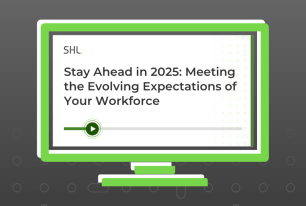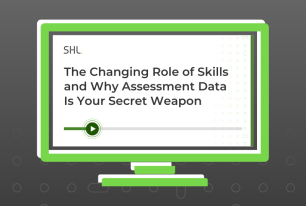How Technology Can Make a Real Change in DEI Efforts
This series explains why DEI efforts fail and how organizations can align people, processes, and technology to make meaningful and sustainable change.
Share
In parts 1 and 2 of this series, we discussed why DEI efforts often fail, and the critical role your people and standard processes play in energizing efforts to succeed. In this final section, we will discuss the role technology plays in increasing objectivity and boosting DEI efforts in HR processes throughout the employee lifecycle.
Reducing Recruiting Bias and Nurturing a Diverse Candidate Pool
When it comes to talent acquisition, recruiters are being stretched to the point of burnout and then take the heat when managers struggle to find the right people to fill their roles. They often have just an application and a résumé to leverage to make the first screening decision about who moves on and who does not, even though it is now widely accepted that résumés are among the least predictive sources of information we have about candidates – talk about starting off on the wrong foot when it comes to selecting the best and most diverse talent on the market!
From the candidate perspective, the job landscape has changed substantially since the onset of COVID-19 and today more people are seeking permanent remote work opportunities and more companies are offering flexible working arrangements. While this can create technological and logistical challenges for organizations, removing location bias also provides the opportunity for employers to maximize their ability to recruit diverse talent by reaching into different and more diverse talent pools.
Implementing the right HR technology into the talent acquisition process can address both recruiter strain and candidate experience.
- First, using a platform that incorporates job-related measures like psychometric assessments, realistic job previews, and video interviewing allows recruiters to gather job-related and predictive information about candidates far beyond a résumé and application, and allows recruiters to compare candidates apples to apples by collecting parallel data. Standardized reporting and candidate dashboarding allow recruiters to scale and make faster recommendations and reduce stress by increasing confidence that they are making more accurate and fair decisions. Importantly, implementing processes like these helps organizations eliminate issues like variability in résumé quality and résumé bias, a prominent phenomenon in which those making hiring decisions subconsciously screen out candidates when they don’t naturally associate with a particular line of work.
- Second, as organizations recruit from wider and more diverse candidate pools, technology can educate and engage candidates, which helps solicit additional job-related information and minimize dropout. We usually think of the candidate experience as a chronological one in which candidates research organizations and open jobs before they apply. In reality, most candidates apply for many jobs and then learn about the organization and role as they go through the selection process. Using an interactive candidate platform allows organizations to educate candidates at scale by providing short bursts of information about the organization, the role, and a realistic preview of the work. The interactive component also increases engagement by encouraging candidates to share more information about themselves in a structured and standardized way (e.g. through short assessments, realistic job previews, video interviews, etc.). This process is engaging for candidates because it allows them to put their best foot forward and to learn more about the role on their own time, while at the same time giving recruiters job-relevant information.
Using an interactive candidate platform allows organizations to educate candidates at scale by providing short bursts of information about the organization, the role, and a realistic preview of the work.
Increasing Accuracy, Objectivity, and Visibility in Talent Management
Once employees are integrated into the organization, many HR teams still rely on spreadsheets and slide decks to run workforce review, succession, and development planning. This means manual creation of talent dashboards and merging multiple data sets together to ultimately provide little ability to answer talent questions in real time, a lack of visibility into talent across the organization, and perpetually outdated information. Lack of the right tools leaves skilled HR business partners stuck in data collection and project management rather than using data to create insights and actionable strategies with business leaders.
Understanding our current workforce is of critical importance for organizations and often extremely challenging. Through platforms that enable the collection of relevant psychometric data on employees and the functionality to analyze the data from an individual and aggregate view, we can achieve a much deeper understanding of current workforce. Understanding strengths and weaknesses from an organizational, functional and/or regional perspective allows us to make informed strategic decisions around training and development investment at a broad scale. Team and individual data enable more informed decisions on smaller developmental programs and an understanding of development needs from an individual perspective to provide relevant opportunities based on each of our unique needs.
Leveraging the right HR technology can unlock real time insights using objective data to drive development and key talent management decisions. Dashboards that combine psychometric data and the specific contextual requirements of critical leadership roles unlock a deeper understanding of the potential match of leaders to these positions that are essential for organizational success. From there, development plans and necessary leadership experiences can be defined for High Potential leaders to create more refined succession plans. Finally, the right technology increases the inclusion of diverse leaders from across the company, allowing you to uncover hidden gems who may not have been considered for specific roles or opportunities, but have the abilities, potential, and necessary experiences to thrive in a critical role. In sum, the right technology has the potential to help organizations maximize the diversity in their candidate and leadership pipelines, ultimately allowing them to make a real change with their DEI efforts.
Want to learn more about how you can leverage your people, create standard processes, and leverage HR technology throughout the employee lifecycle to improve insights and promote diversity, equity, and inclusion? Contact us today to learn more.









